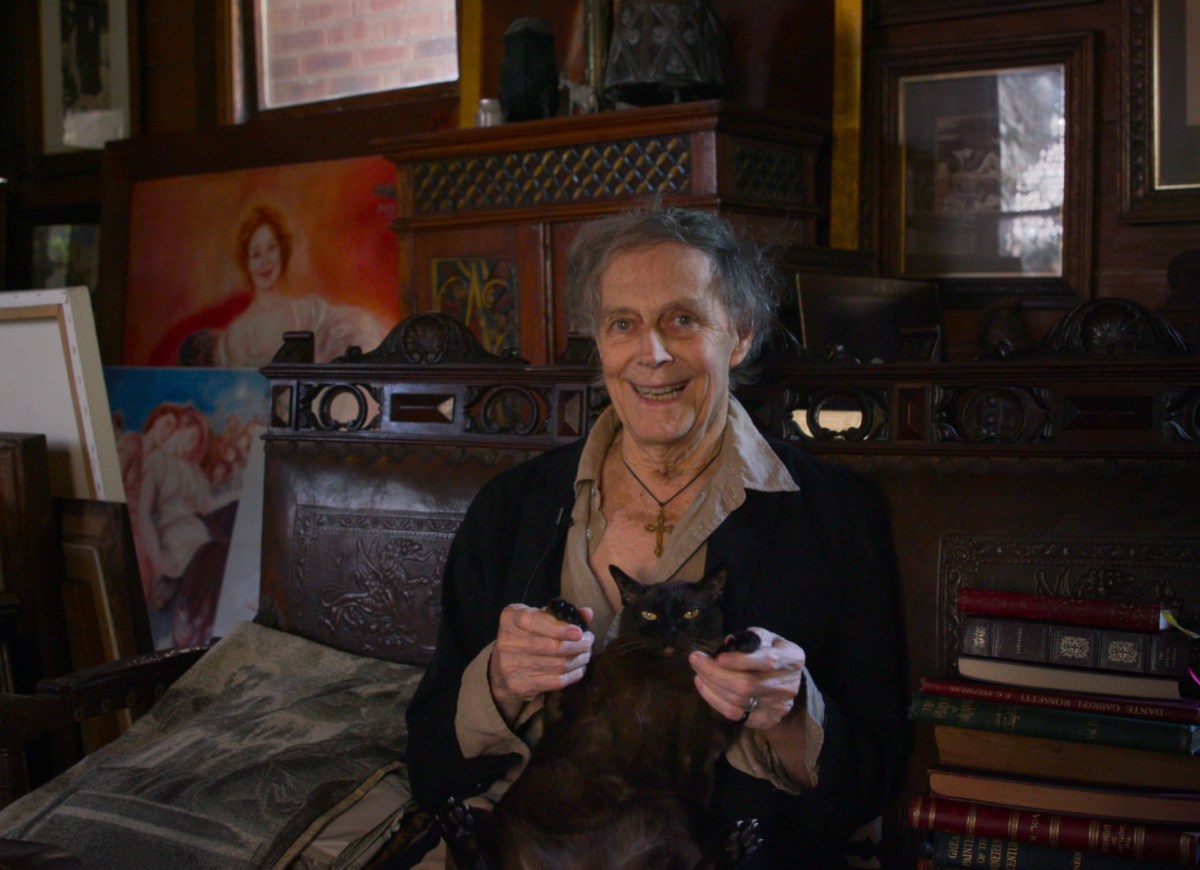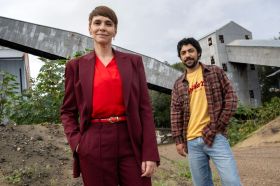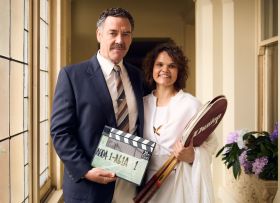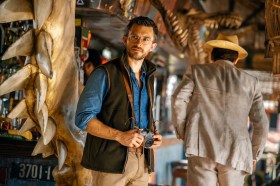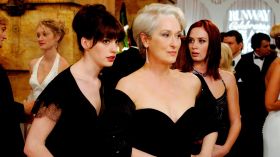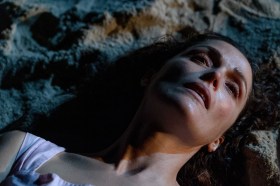In her accomplished and engrossing 2021 documentary about Beatles producer George Martin’s relocation of AIR Studios from London to Montserrat, Under the Volcano, Gracie Otto demonstrated a real prowess for combining rare archival material with famously taciturn talking heads. (Who else has persuaded all three members of The Police to speak at length – and without rancour – about the making of their final album Synchronicity?) And, crucially, Otto has mastered the documentary maker’s art of making herself invisible and inaudible. One can hardly conceive of a more composed – or more impressive – piece of documentary film making.
Otto by Otto could not be more different. For a start, the subject is Gracie’s father, stage and screen actor Barry Otto, so invisibility is not an option. Nor is impartiality. Barry’s decline into dementia has been mercifully slow and relatively private, though a public appearance at a bushfire fundraiser, pre COVID, unbagged the proverbial cat. (Years of earlier scatty behaviour was dismissed as being well within Barry’s decidedly eccentric bandwidth.)
Read: Castlemaine Documentary Festival celebrates 10 years
From a technical point of view, none of the talking heads in Otto by Otto are seen. Contributions from Neil Armfield, Gillian Armstrong, Cate Blanchett, Ray Lawrence, Baz Luhrmann, Aubrey Mellor – even Otto family members – are voiced over collaged archival material. Otto family home movies appear as if in a mirror on a wall papered with pale roses. (One ‘mirror’ in portrait format, one in landscape. Each with a different print background.)
Raw, conversational and unrehearsed
The individual contributions are, for the most part, raw and conversational. They have the repetitions and non sequiturs of unrehearsed speech. What they lack in precision and clarity, they make up for in passion and an obvious striving for the right metaphor. Luhrmann speaks of a ‘razor blade’ line ‘between humour and absolute tragedy’ that Shakespearean clowns walk. Luhrmann also observes that the line between who Barry was as a person and the character he was ‘absorbing’ was invisible.

Blanchett, who played Miranda to Otto’s Prospero on stage in 1995, rather wonderfully describes Barry as being like ‘a hatful of elves or imps or something.’
‘You have this instant desire to protect him because he doesn’t appear to have any skin like a regular person, but then, as Prospero, he just erupted. He was volcanic. And you realise: no, he can protect me.’
Gracie began making her documentary in earnest in 2015. The narrative spine of the documentary begins on the final night of Matthew Whittet’s play Seventeen, which marked Barry’s return to Belvoir Street after an absence of almost 19 years. In the play, five actors in their 70s play 17-year-olds on the last day of high school. Barry performed with Peter Carroll, Maggie Dence, John Gaden and Anna Volska.
Seventeen turned out to be Barry’s final play.
Two years earlier, Barry withdrew from an Adelaide Festival production of The Kreutzer Sonata, an adaptation of the Tolstoy novella for solo actor. According to Miranda Otto, the role was ‘impossible to learn.’ Barry ignored Miranda’s advice to read sections rather than recite them all. He was ‘really committed to learning the whole thing’, believing the performance would be ‘the defining moment of his career.’
Barry fled home to Sydney. According to his second wife, Sue Hill, the experience ‘just broke him.’
Gracie’s motivations for making the documentary are spoken of twice. And they are, perhaps understandably, contradictory. She says, in a voice over: ‘I think subconsciously I started doing this documentary [because] I knew dad was heavily depressed, and I just wanted him to be doing what he loved… it would be a distraction from everything else that was going on in his life.’
When Barry expresses interest in revisiting Jack Hibberd’s classic monodrama A Stretch of the Imagination – a role he performed at La Boite in 1974 – Gracie decides to document Barry’s return home to Brisbane and his efforts to become Hibberd’s outback philosopher protagonist Monk O’Neill one more time.
Gracie’s recap of Barry’s childhood and early adulthood is quick but colourful. (Sue Hill quips that she was supposed to be a ‘revenge fuck’ for Barry, after his bust up with first wife Lindsay Clayton, and ‘a lovely one night stand’ for her. But ‘I fell in love with him because the sex was so good… but he was quite broken.’)
Back in the present day thread, Gracie realises that Barry has only managed to memorise a single line of Hibberd’s play. Which he keeps repeating.
It’s in this moment of crisis, when filming a dismal rehearsal in a theatre, that Gracie stops filming Barry as a daughter, and Gracie Otto the film-maker kicks in. She focuses tightly on the collapsing face of an actor drying… like an anthropologist – or a vivisector – might.
Otto by Otto: watching another role played out
This is not as ghoulish as it sounds. There’s something about a viewfinder that distances the photographer from the horror. There’s something, too, about the golden stage light and the familiarity of the face in its glow – the face of Harry Joy from Bliss (Ray Lawrence 1995), of Roy from Cosi (Mark Joffe 1996) and Doug Hastings from Strictly Ballroom (Luhrmann 1992) – that allows us to watch. Not detached. Not unaffected. But with loving wonder. As if it was another role.
Barry’s demise is shockingly fast. Shoulder surgeries give him a brief surge of optimism, but a subsequent visit to hospital for a hip replacement leaves him imagining he is part of a film shoot in a hospital. Paradoxically, when he looks disheveled and crazed, his mind is quite clear. When he looks relaxed and sane, he is at his most deluded.
Otto by Otto is a deeply personal account of a unique artist. A gentle man. It’s all the better for not being a love letter or a hagiography. The constant jackhammer purring of his cats, Belle and Bogart, says it all. No other protestations of love or admiration are required.
Revealed: Otto by Otto is currently streaming on Stan.
Notes: If you haven’t already seen it, I strongly advise you to watch the recently-screened Miranda Otto episode of Who Do You Think You Are? (Season 15, Episode 2 on SBS on Demand.) There are some significant revelations about ‘May’ Thompson, a woman 30-odd years Barry’s senior that he refers to in Otto by Otto as his godmother. (‘It was like I was her son. She decided to cultivate me.’)
Under the Volcano is also streaming on Stan. Gracie Otto’s 2022 romcom about a Dolly Parton impersonator Seriously Red is on Binge and Prime.
